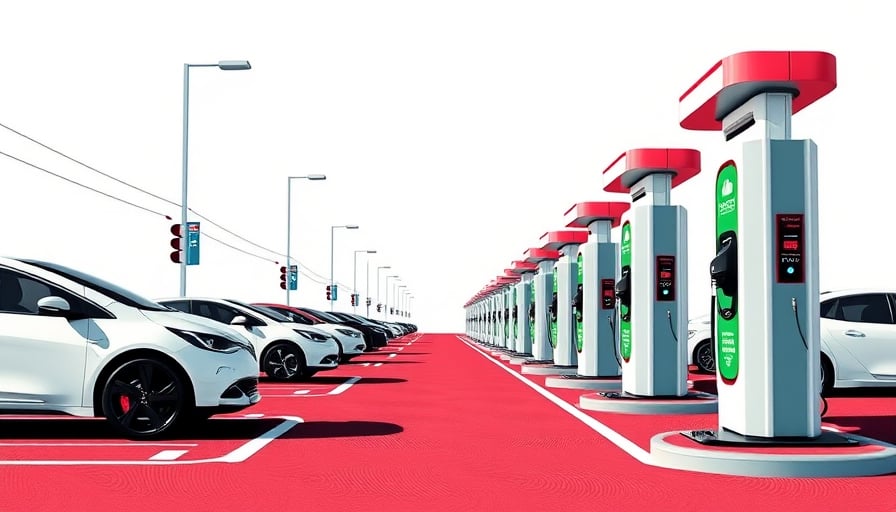Science Applications International Corp: A Strategic Pivot Amidst Global Turbulence
Science Applications International Corp (SAIC) has once again positioned itself at the center of a high‑stakes restructuring effort, a move that promises to sharpen its competitive edge but also raises questions about the long‑term viability of its diversified portfolio. On November 13, 2025, the company announced a consolidation from five business groups into just three, a decision framed as a necessary step to improve operational efficiency and customer focus. The announcement, reported by Defense Daily and GlobeNewswire, underscores a broader trend in the IT services and defense sectors: the relentless pressure to streamline complex, multi‑faced organizations into leaner, more agile units.
A Bold Re‑engineering of the Business Model
SAIC’s move to reduce its business groups is not a mere cosmetic tweak. By slashing internal silos, the company aims to cut redundancy, accelerate decision‑making, and free up capital for high‑growth initiatives. This strategy reflects a clear understanding that, in an era where defense budgets are tightening and competition from emerging tech firms is intensifying, the ability to deliver integrated solutions quickly is paramount. Yet, the announcement also signals a shift away from the company’s historically broad consulting remit—spanning security, energy, environmental, health, and infrastructure markets—toward a more concentrated focus on core competencies.
Critics will point out that such consolidation could expose SAIC to concentration risk. If the remaining three groups fail to capture sufficient market share, the company’s diversification advantage, which has historically insulated it from sector downturns, may erode. Moreover, the reduction in business groups could lead to talent attrition, as specialists leave roles that no longer align with their expertise.
Strategic Partnerships and Market Positioning
While SAIC is tightening its internal structure, it simultaneously deepens external alliances. Recent reports from CarNewsChina and Motor1 reveal that SAIC Maxus has delivered 100 battery‑swap MPVs with a 527‑km range to Shanghai’s ride‑hailing sector—a bold move into the electrified mobility market. Additionally, an expansion of the partnership with Volkswagen Group, as reported by Motor1, indicates SAIC’s intent to solidify its foothold in China’s automotive sector, a region that has long been a battleground for foreign and domestic automakers. These developments suggest that SAIC is not abandoning its global ambitions; instead, it is realigning its resources to capitalize on high‑growth, high‑technology niches.
The company’s focus on battery swap technology and collaboration with industry giants positions it advantageously against the backdrop of China’s aggressive push to dominate the electric vehicle (EV) ecosystem. By securing a foothold in ride‑hailing services—an area with rapid adoption rates—the company is leveraging its IT and engineering expertise to create synergies that could generate recurring revenue streams and reinforce its strategic relevance.
Financial Snapshot and Market Context
SAIC’s current share price sits at $90.38, a figure that sits comfortably within the 52‑week range of $89.24 to $133.00. The company’s market capitalization of $4.22 billion and a price‑to‑earnings ratio of 11.1 suggest that investors perceive SAIC as a reasonably valued player in the industrial and IT services space. However, the company’s close price and earnings metrics must be interpreted against its ongoing restructuring. Shareholders will need to assess whether the cost savings and operational efficiencies realized through consolidation translate into sustainable earnings growth.
In the broader industrial sector, the commercial UAV market is projected to reach $8.04 billion by 2029, growing at a CAGR of 7.1% as reported by EIN Presswire. This growth trajectory highlights the expanding demand for advanced technology solutions—an area where SAIC’s engineering and scientific expertise could be leveraged. The company’s ability to capture a share of this burgeoning market will depend on how effectively it can align its new structure with the evolving needs of defense and commercial customers.
Risks and Opportunities
The consolidation initiative carries inherent risks. Any misstep in realigning the business groups could lead to operational disruptions, loss of client confidence, and a decline in revenue streams. Furthermore, the company’s strategic partnerships, while promising, are contingent on regulatory approvals and the competitive dynamics of the Chinese automotive market—a landscape that has become increasingly volatile.
Conversely, the opportunities are significant. By focusing on its strongest capabilities, SAIC can streamline product development cycles, reduce overhead costs, and improve profitability margins. Its expanded presence in the EV and ride‑hailing sectors positions the company to tap into the rapidly growing demand for sustainable mobility solutions. Additionally, the partnership with Volkswagen Group could serve as a springboard for further collaborations within Europe’s automotive industry, providing a counterbalance to the challenges posed by Chinese competition.
Conclusion
Science Applications International Corp is at a crossroads. Its decision to consolidate business groups signals a bold attempt to adapt to an industry where agility, specialization, and strategic partnerships are becoming the new yardsticks for success. While the restructuring could expose the company to concentration risks and operational challenges, it also offers a clear path toward higher efficiency and targeted growth. The coming months will be crucial: investors and stakeholders must scrutinize whether SAIC’s streamlined structure delivers the promised efficiencies and whether its strategic alliances translate into measurable revenue growth. Only time will reveal whether this recalibration will cement SAIC’s position as a leader in scientific and engineering solutions or whether it will prove to be an ill‑timed gamble in a highly competitive landscape.




